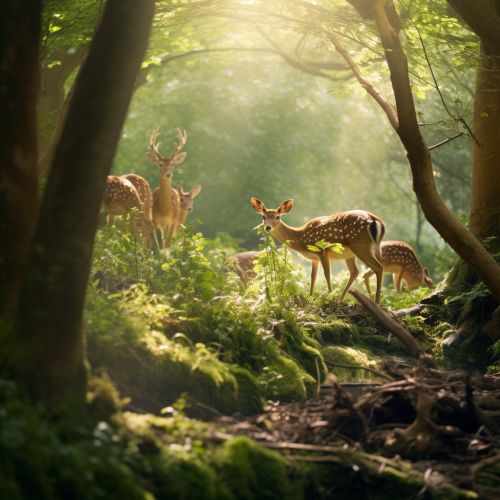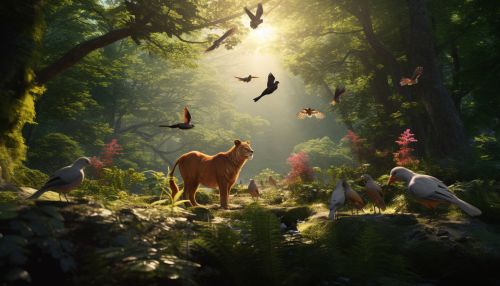Animal foraging behavior
Introduction
Animal foraging behavior is a fundamental aspect of ecology, ethology, and evolutionary biology. It refers to the ways in which animals search for, locate, and capture food resources. The study of foraging behavior is critical for understanding the interactions between animals and their environment, as well as the evolutionary pressures that shape these behaviors.
Types of Foraging Behavior
There are several types of animal foraging behavior, each with its own unique characteristics and evolutionary adaptations. These include:
- Solitary foraging: This is when an animal forages alone. This behavior is often seen in species that have specific dietary requirements or live in environments where food resources are scarce or unpredictable.
- Group foraging: This involves animals foraging in groups. Group foraging can provide several benefits, such as increased protection from predators and improved efficiency in locating and capturing food.
- Cooperative foraging: This is a type of group foraging where animals work together to capture or find food. This behavior is often seen in species that hunt large or difficult-to-capture prey.


Factors Influencing Foraging Behavior
Foraging behavior in animals is influenced by a variety of factors. These include:
- Predation risk: The risk of predation can significantly influence an animal's foraging behavior. Animals may alter their foraging strategies to minimize their exposure to predators.
- Resource availability: The availability of food resources can also influence foraging behavior. In environments where food is scarce or unpredictable, animals may adopt more flexible or opportunistic foraging strategies.
- Competition: Competition for food resources can influence foraging behavior. Animals may alter their foraging strategies to avoid competition or to outcompete others.
- Environmental conditions: The physical and climatic conditions of an environment can influence foraging behavior. For example, animals may alter their foraging strategies in response to changes in temperature, precipitation, or seasonality.
Evolution of Foraging Behavior
The foraging behaviors observed in animals today are the result of millions of years of evolution. These behaviors have been shaped by natural selection, with those that increase an animal's ability to find and capture food being favored.
